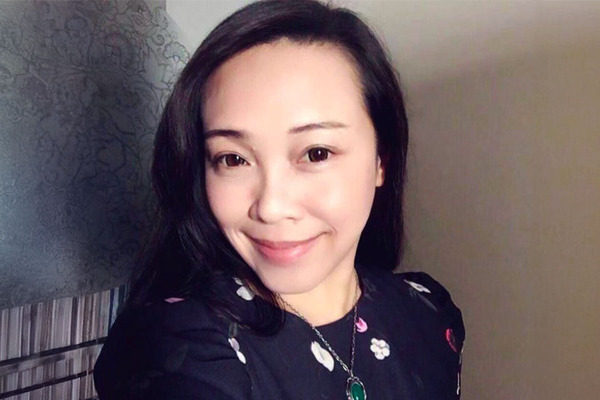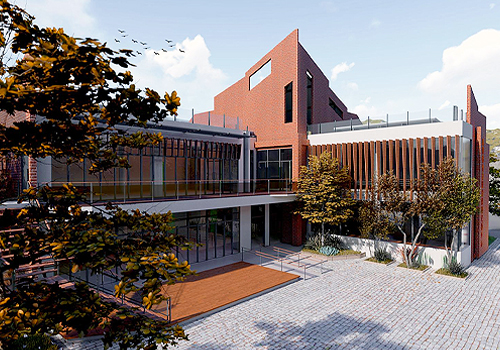
Interview
Chia Chen Liu

1 Please give us a brief bio of yourself and your design background.
Hi! I am a Hakka, from a farming family, in Pingtung, Taiwan. I love to draw and observe. My main interest is in architecture design with arts and structure as my minor interest.
2 What made you become/why did you choose to become a designer/artist?
When I was young, I developed an intuition and was endowed with artistic talents. I like brining to society a better living environment and feelings.
3 Tell us more about your agency/company, job profile, and what you do.
My firm concentrates on architectural, interior, and landscaping design. As Hakka Taiwanese, we invested much of our time and efforts in revitalising historic Hakka Fo Fong (clan living quarters), and many historic Hakka buildings in which we are very well qualified and experienced. At the moment we are designing libraries for remote area Hakka towns, emphasising on strong children’s department to help the disadvantaged children of the remote Hakka towns. We are also designing a town hall complex and revamping a rundown tobacco collection station in Hakka town into a senior center, as the need for senior care, has risen dramatically in this modern society.
4 What does “design” mean to you?
Transforming ordinary to extraordinary, from mediocrity to outstanding.
5 What’s your favorite kind of design and why?
Using the most simplistic and naturalistic material, designing the most harmonious, eco-friendly creation that is still beneficial to mankind.
6 To you, what makes a “good” design?
It must be environmental friendly and passionately love for life.
7 How did you come up with the idea for your award-winning design?
I am an authentic, bonafide Hakka (Hakkanese). The Wanluan (Van Mang in Hakka) library site is located in Van Mang, within the Ling Dui region of southern Taiwan. This area is historically significant as it was home to a Hakka militia, formed to protect all Hakka in the region. Due to its strategic location bordering both the Aboriginal territories and Southern Min communities, Van Mang was known as the "Pioneer Regiment." Given the area's diversity, the library will serve a wide range of cultural groups. As a native who was born and raised less than ten kilometers from the library site, I understand the importance of designing a space that accommodates the various cultural groups in the area. From an architectural perspective, the library’s exterior design reflects the native appearance, respecting the local context. The interior of the library is designed to be extremely handicapped-friendly, featuring an even floor design throughout. Although the library is small, the book collection capacity has been maximised to ensure it meets the needs of the community.
8 What was your main source of inspiration for this design?
As a native Hakka, looking at the Mother Mountain Da Wu (Tai Vu San in Hakka pronunciation), the Hakka word, paper cherish furnace (that is another unique Hakka culture), and words from The Bible are all my inspiration for the project.
9 Do you think your country and its cultural heritage has an impact on your design process?
That is for sure. In my country of Taiwan, we have the freedom of expression and to learn and practice what we deem worthy, of course, that allows our imagination to run freely. My Hakka upbringing deeply affected my designs, allowing me to look at everything from multiple angles with the smarts of life in migration.
10 Congratulations! As the winner of the French Design Awards, what does it mean to you and your company and team to receive this award distinction?
Thank you! Winning the French Design Awards is an honour and affirms to the practices and ways of my design.
11 Can you explain a bit about the winning work you entered into the French Design Awards, and why you chose to enter this project?
This project was my first library project. So it’s like my first baby. I have to make every effort to take care of her. It is also a very meaningful project. Growing up in this very rural area of Liug Dui Hakka area. We don’t have a decent library. The only library we have at home was situated at the second floor of a governmental building. We called it a haunted house. This is because someone actually committed suicide there. So we really don’t have a place to study or do research. So when I got the project I was so excited and wanted to design a special place for my neighboring Hakka town, to provide a place for the children to study and learn. This project is not only a place to grow one’s knowledge, but it is also a place for the townsfolk to meet and interact, a venue for arts and cultural performances. It’s just like a big family room for the whole town. It not only changes the quality of life in a rural area but also provides the possibility for cultural activities to be hosted here.
12 What were the main challenges you faced during the design process, and how did you overcome them?
There are many challenges that I faced during the design of this project. One of the main problems was the extremely low budget we were allowed. The site is too small for the government to want, hence the whole government bureaucracy not wanting to pay for it. Other than that, Through many days and nights of educating the builder because the builders are not sufficiently knowledgeable in understanding the building's design. Worst of all, I'm still not fully compensated for the work. But thankfully, the French Design Awards have provided me some means of comfort with the highest honour of winning this award.
13 How do you think winning this award will impact your future as a designer?
By winning the 2024 French Design Awards, it has given me a tremendous confidence in leading projects in the future.
14 What are your top three (3) favorite things about the design industry?
Creativities, honour, and the ability to save Mother Earth with our eco-friendly designs.
15 What sets your design apart from others in the same category?
With full of enthusiasm and innovation, I chose to use green energy, that is solar energy, water conservation, and a fully circulated interior to save on air condoning. We even planted native trees in Liug Dui. Bringing Hakka culture and innovation to the designs in the spirit of continuation of our Hakka culture and language allows the children of this Hakka village to enjoy this library for many generations to come. The design is to use composite materials that are reinforced concrete, wood, wherever suitable, and steel structures throughout the project.
16 Where do you see the evolution of design industry going over the next 5-10 years?
It is imperative to decrease global warming, all future designs must be more eco-friendly, and go green as much as we can.
17 What advice do you have for aspiring designers who want to create award-winning designs?
Hard work and be persistent with your ideal.
18 What resources would you recommend to someone who wants to improve their skills in the design industry?
Traveling to enrich your life and thoughts, go back to school to teach or take courses.
19 Tell us something you have never told anyone else.
I never cared about awards, but after receiving prestigious awards like The French Design Awards, it really bettered my life and perspective.
20 Who has inspired you in your life and why?
The interaction of the Proverbs in the Bible with beautiful life in general. The creative works of Christians are like the Power to create like God.
21 What is your key to success? Any parting words of wisdom?
Dedication and hard work.
22 Do you have anything else you would like to add to the interview?
I wish there would be an award presentation ceremony for the winners to physically experience the most romantic country in the world, France.

